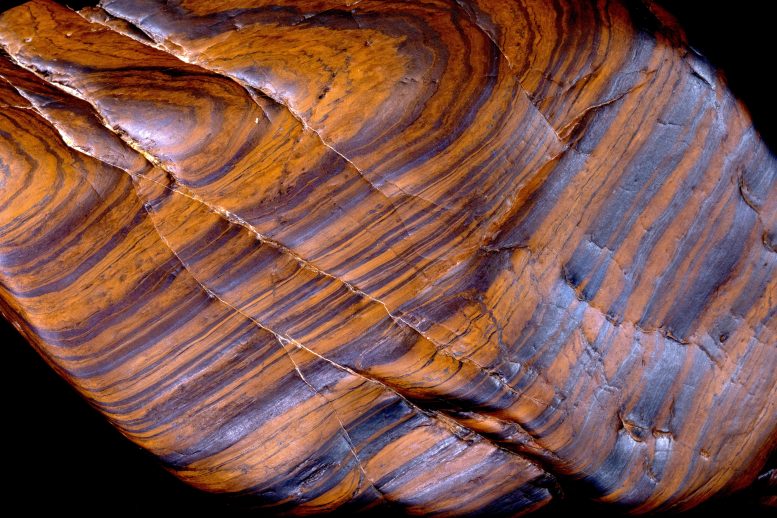
Metamorphosed banded iron formation from southern Wyoming showing fine lamination. The rock is approximately 2.7 billion years old. Dark bands are iron oxides (magnetite, hematite) and red-orange bands are chert with iron oxide inclusions (jasper). Credit: Linda Welzenbach-Fries/Rice University
New research suggests that ancient microorganisms helped cause massive volcanic events.
Banded iron formations, sedimentary rocks with stunning strata of burnt orange, yellow, silver, brown, and a blueish black hue, may have been the catalyst for some of the Earth’s largest volcanic eruptions in history, suggests recent research from Rice University.
These rocks are composed of iron oxides that sank to the ocean floor ages ago, solidifying into dense layers over time. The newly published study in Nature Geoscience proposes that these iron-rich layers may serve as a bridge linking ancient surface alterations – such as the rise of photosynthetic life – to planetary processes like volcanism and plate tectonics.
In addition to linking planetary processes that were generally thought to be unconnected, the study could reframe scientists’ understanding of Earth’s early history and provide insight into processes that could produce habitable exoplanets far from our solar system.
“These rocks tell — quite literally — the story of a changing planetary environment,” said Duncan Keller, the study’s lead author and a postdoctoral researcher in Rice’s Department of Earth, Environmental, and Planetary Sciences. “They embody a change in the atmospheric and ocean chemistry.”
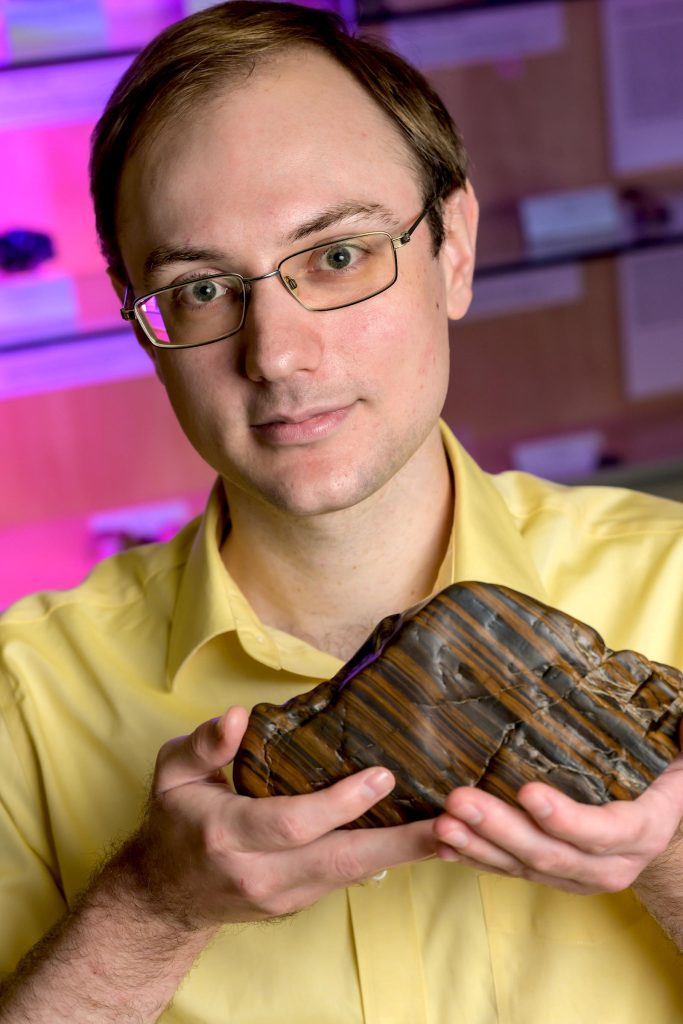
Duncan Keller is a postdoctoral researcher in Rice’s Department of Earth, Environmental and Planetary Sciences and the lead author of the study published in Nature Geoscience. Credit: Jeff Fitlow/Rice University
Banded iron formations are chemical sediments precipitated directly from ancient seawater rich in dissolved iron. Metabolic actions of microorganisms, including photosynthesis, are thought to have facilitated the precipitation of the minerals, which formed layer upon layer over time along with chert (microcrystalline silicon dioxide). The largest deposits formed as oxygen accumulated in Earth’s atmosphere about 2.5 billion years ago.
“These rocks formed in the ancient oceans, and we know that those oceans were later closed up laterally by plate tectonic processes,” Keller explained.
The mantle, though solid, flows like a fluid at about the rate that fingernails grow. Tectonic plates — continent-sized sections of the crust and uppermost mantle — are constantly on the move, largely as a result of thermal convection currents in the mantle. Earth’s tectonic processes control the life cycles of oceans.
“Just like the Pacific Ocean is being closed today — it’s subducting under Japan and under South America — ancient ocean basins were destroyed tectonically,” he said. “These rocks either had to get pushed up onto continents and be preserved — and we do see some preserved, that’s where the ones we’re looking at today come from — or subducted into the mantle.”
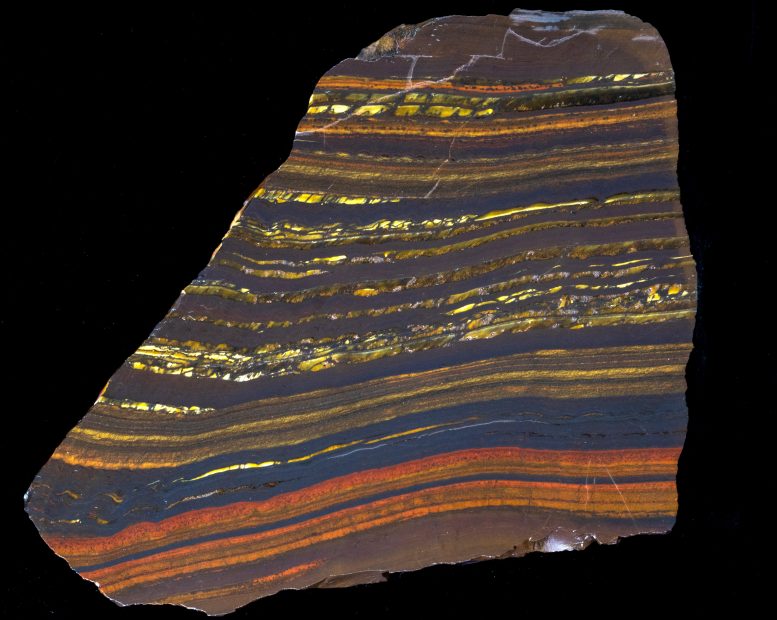
Metamorphosed banded iron formation from the Hamersley Group of Western Australia. The rock is approximately 2.5 billion years old. Dark bands are iron oxides (hematite, magnetite), reddish bands are chert with iron oxide inclusions (jasper), and gold bands are amphibole and quartz. Specimen collected by Cin-Ty Lee. Credit: Linda Welzenbach-Fries/Rice University
Because of their high iron content, banded iron formations are denser than the mantle, which made Keller wonder whether subducted chunks of the formations sank all the way down and settled in the lowest region of the mantle near the top of Earth’s core. There, under immense temperature and pressure, they would have undergone profound changes as their minerals took on different structures.
“There’s some very interesting work on the properties of iron oxides at those conditions,” Keller said. “They can become highly thermally and electrically conductive. Some of them transfer heat as easily as metals do. So it’s possible that, once in the lower mantle, these rocks would turn into extremely conductive lumps like hot plates.”
Keller and his co-workers posit that regions enriched in subducted iron formations might aid the formation of mantle plumes, rising conduits of hot rock above thermal anomalies in the lower mantle that can produce enormous volcanoes like the ones that formed the Hawaiian Islands. “Underneath Hawaii, seismological data show us a hot conduit of upwelling mantle,” Keller said. “Imagine a hot spot on your stove burner. As the water in your pot is boiling, you’ll see more bubbles over a column of rising water in that area. Mantle plumes are sort of a giant version of that.”
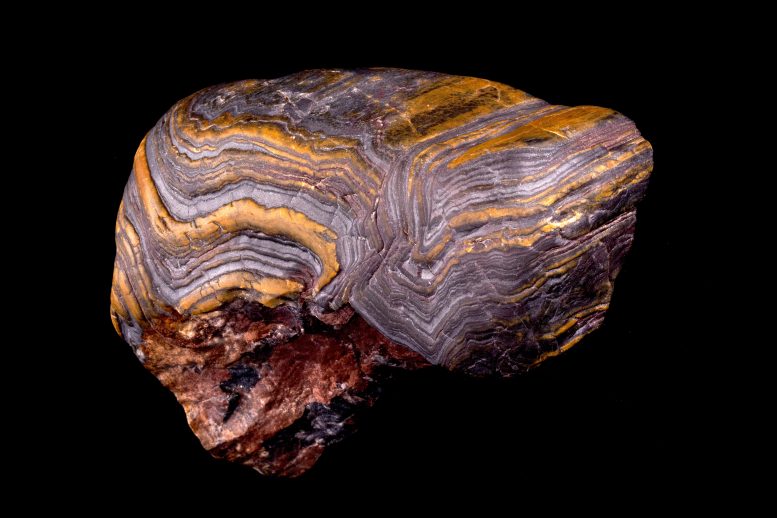
Metamorphosed banded iron formation from southern Wyoming showing deformation and folding. The rock is approximately 2.7 billion years old. Dark bands are iron oxides (magnetite, hematite) and yellow-orange bands are chert with iron oxide inclusions (jasper). Credit: Linda Welzenbach-Fries/Rice University
“We looked at the depositional ages of banded iron formations and the ages of large basaltic eruption events called large igneous provinces, and we found that there’s a correlation,” Keller said. “Many of the igneous events — which were so massive that the 10 or 15 largest may have been enough to resurface the entire planet — were preceded by banded iron formation deposition at intervals of roughly 241 million years, give or take 15 million. It’s a strong correlation with a mechanism that makes sense.”
The study showed that there was a plausible length of time for banded iron formations to first be drawn deep into the lower mantle and to then influence heat flow to drive a plume toward Earth’s surface thousands of kilometers above.
In his effort to trace the journey of banded iron formations, Keller crossed disciplinary boundaries and ran into unexpected insights.
“If what’s happening in the early oceans, after microorganisms chemically change surface environments, ultimately creates an enormous outpouring of lava somewhere else on Earth 250 million years later, that means these processes are related and ‘talking’ to each other,” Keller said. “It also means it’s possible for related processes to have length scales that are far greater than people expected. To be able to infer this, we’ve had to draw on data from many different fields across mineralogy, geochemistry, geophysics, and sedimentology.”
Keller hopes the study will spur further research. “I hope this motivates people in the different fields that it touches,” he said. “I think it would be really cool if this got people talking to each other in renewed ways about how different parts of the Earth system are connected.”
Keller is part of the CLEVER Planets: Cycles of Life-Essential Volatile Elements in Rocky Planets program, an interdisciplinary, multi-institutional group of scientists led by Rajdeep Dasgupta, Rice’s W. Maurice Ewing Professor of Earth Systems Science in the Department of Earth, Environmental and Planetary Sciences.
“This is an extremely interdisciplinary collaboration that’s looking at how volatile elements that are important for biology — carbon, hydrogen, nitrogen, oxygen, phosphorus, and sulfur — behave in planets, at how planets acquire these elements and the role they play in potentially making planets habitable,” Keller said.
“We’re using Earth as the best example that we have, but we’re trying to figure out what the presence or absence of one or some of these elements might mean for planets more generally,” he added.
Reference: “Links between large igneous province volcanism and subducted iron formations” by Duncan S. Keller, Santiago Tassara, Leslie J. Robbins, Cin-Ty A. Lee, Jay J. Ague and Rajdeep Dasgupta, 25 May 2023, Nature Geoscience.
DOI: 10.1038/s41561-023-01188-1
The study was funded by NASA and the Natural Sciences and Engineering Research Council of Canada.

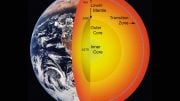
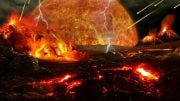
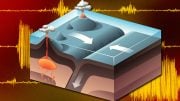



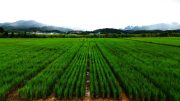
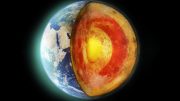
Interesting research. Iron bacteria that i todays world can create reddish-brown slime where water and iron oxide (rust) basically is present could have contributed a bit to iron oxides “polluting” the ocean’s billions of years ago, but mostly iron will break down naturally into iron oxide which can spread via water movement and settle to build iron deposits over time. Volcanic eruptions are unlikrly to be influenced by micro-organisms, it would be the microorganisms that would be influenced by the minerals coming out of volcanos.
I believe scientist’s are inclined to downplay the complexity of much they profess to understand,- guess that is an ego thing.
Stay safe regards Niels